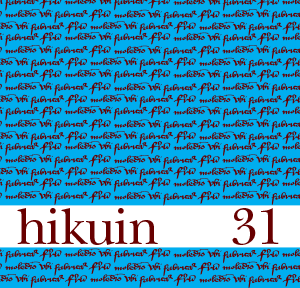Järnhantering i Tvååkersområdet i Halland
En avslutande diskussion kring Järnmöllan
Resumé
Iron production at Tvååker in Halland.
A concluding discussion about Järnmöllan
Gert Magnusson
A water powered iron production, Järnmöllan, an iron mill near Tvååker village in Halland was mentioned 1197 in a deed of gift from the archbishop Absalon to the Sorö monastery in Sealand. The original document has been lost, but several copies from the 13th and 15th centuries are still existant. The main issues of the project were to discuss where Järnmöllan was situated, when its was working, what technique that was used and by whom it was run. In order to discuss the technique used at Järnmöllan in early medieval times, the dating of the remains of the iron production at Södra Järnvirke, another locality mentioned in the medieval document, as well as the nearby site at the stream of Sanda on the border between Ugglehult and Dövared were important. The work in the project has followed several steps. The first was a close reading of the Latin text of the medieval documents, which led to the realisation that the iron production at Järnmöllan never seemed to have been a part of Absalons property. The water powered technique was most certainly developed within the farming community. An inmportant question was if the modern locality named Järnmölle not far from Tvååker could be the medieval production site. However, no slags were found at Järnmölle or its vicinity and the rapids, no more than about a meter height, seemed too small for such a site. Neither did the test excavations that were undertaken reveal any remains of iron production. Through the slag finds at Järnvirke and Ugglehult/Dövared, it was concluded that at least two different techniques had been in use, namely a water powered forge combined with a water power bloomery production. At Järnvirke two bloomery furnaces were found by a large slag heap, along with another unusually large slag heap, which also was excavated. No bloomery furnaces were found at this second site, but the slag showed that the bloomery technique had been used there too. Neither site was situated by any stream or rapids, which implied that man power has been used for the bellows, which ruled them out as the location of the medieval iron mill - Järnmöllan. The site at Ugglehult/Dövared was a altogether different matter. By seven meter high rapids, a pond, the remains of a building with three hearths for iron production as well as slag remains of production, calotte slag from smithing and a lot of hammer scale were found. The hearths appeared very similar to those of the specialised central European bloomery iron production as presented by Agricola in the 16th century. The dating of iron production in the vicinity of Tvååker is of great importance. According to some 20 radiocarbon dating the activity seems to have been undertaken in the 11th and 12th century and was probably closed down shortly after the donation of Absalon. Some scholars in history of technology have argued that the donation should be seen as a demonstration of the Cistercians as innovators of iron production techniques. However, at Tvååker, the results suggest that the monks closed it down and use their forests for other purposes, such as building timber. The conclusion that has been drawn is that the iron production at Järnmöllan was founded and developed within the farming community. When the monks took over the forest, timber and charcoal became conflicting interests, with the result that the iron production disappeared after approximately 200 years as an outlaying production for the farmers at Tvååker.
Referencer
Björk, Björn, »Herdalsjern«: produktion och hantering av blästerugnsjärn i Härjedalen. Med Hammare och Fackla 32 s 181-217, Stockholm 1992.
Björkenstam, Nils, Västeuropeisk järnframställning under Medeltiden. Jernkontorets Bergshistoriska skriftserie nr 26, Stockholm1990.
Dahlström, Eva, Verkstadsmiljöer under 1800-talet, Stockholm 1999.
Englund, Lars-Erik, Blästbruk. Jernkontorets bergshistoriska skriftserie nr 40, Stockholm 2002.
Eschenlohr, Ludwig, Serneels, Vincent, Les bas fourneax mérovingiennes de Boécourt. Cahier d´archéologie jurassienne 3, Porretruy 1991.
Hanssen, Börje, Österlen, Ystad 1952.
Johansen, Otto, Geschichte des Eisens, Düsseldorf 1953.
Karlsson, Lennart, Cistercian iron production. In Medieval iron in Society I, Jernkontorets forskning serie H 34, Stockholm 1985.
Larsson, Lars-Olof, Från blästbruk till bruksdöd. Småländsk järnhantering under 1000 år. Jernkontorets bergshistoriska Skriftserie nr 35, Stockholm 2000.
Lindroth, Sten, Gruvbrytning och kopparhantering vid Stora Kopparberget intill 1800-talets början, Uppsala 1955.
Magnusson, Gert, Lapphyttan – An Example of Medieval Iron Production. Medieval Iron in Society-Papers Presented at the symposium in Norberg May 6-10 1985. Jernkontorets bergshistoriska utskott serie H 34, Stockholm 1985.
–: Lågteknisk järnhantering i Jämtlands län. Jernkontorets bergshistoriska skriftserie nr 22, Stockholm 1986.
–: Järnmöllan i Tvååker – en teknisk innovation i Danmark bergslag? Medeltida danskt järn. Framställning av och handel med järn i Skåneland och Småland under medeltiden, Halmstad 1995.
Magnusson, Gert & Per-Olof Millberg, Lågteknisk järnframställning i Skaraborgs län. Västergötlands fornminnesförenings tidskrift 1981-82, Skara 1981.
–: Lågteknisk järnframställning i Skaraborgs län. Rapport från de fortsatta undersökningarna. Västergötlands fornminnesförenings tidskrift 1983-84, Skara 1983.
Magnusson, Gert, Millberg, Per-Olof och Jonsson, Kristina, Lågtekniskjärnframställning i Norra Västergötland. Jernkontorets foskning Serie H 71, Stockholm 2001.
Myrdal, Janken, Jordbruket under feodalismen. Det svenska jordbrukets historia, Stockholm 1999.
Narmo, Lars-Erik, Jernvinna i Valdres og Gausdal – ett fragment av middelalderens ekonomi. Varia 43, Oslo 1996.
Nihlén, John, Äldre järnhantering i Sydsverige. Studier Rörande den primitiva järnhanteringen i Halland och Skåne. Jernkontorets Bergshistoriska skriftserie nr 9, Stockholm 1939.
Nordman, Ann-Marie, Dubbelugnar i Axamo. Jernkontorets bergshistorisk utskott H 55, Stockholm 1994.
Pleiner, Radomir, Iron in Archaeology, Prag 2000.
Pettersson, Ing-Marie, Norbergs bergslag. Atlas över Sveriges Bergslager. Jernkontorets bergshistoriska Utskott serie H 101, Stockholm 1994.
Reynolds, Terry, Iron and water: Technological context and the origins of Water-powered Iron Mills. In Medieval Iron in Society I. Jernkontorets forskning H 34, Stockholm 1985.
Rinman, Sven, Försök uti jernets historia, Stockholm 1782.
Waldén, Bertil, Skyllberg, 1346, 1646, 1946, Stockholm 1947.
Varenius, Björn, Lågteknisk järnhantering i södra Vätterbygden. Jernkontorets forskning H46, Stockholm 1990.
Downloads
Publiceret
Citation/Eksport
Nummer
Sektion
Licens
Forfatter og Forlag.





